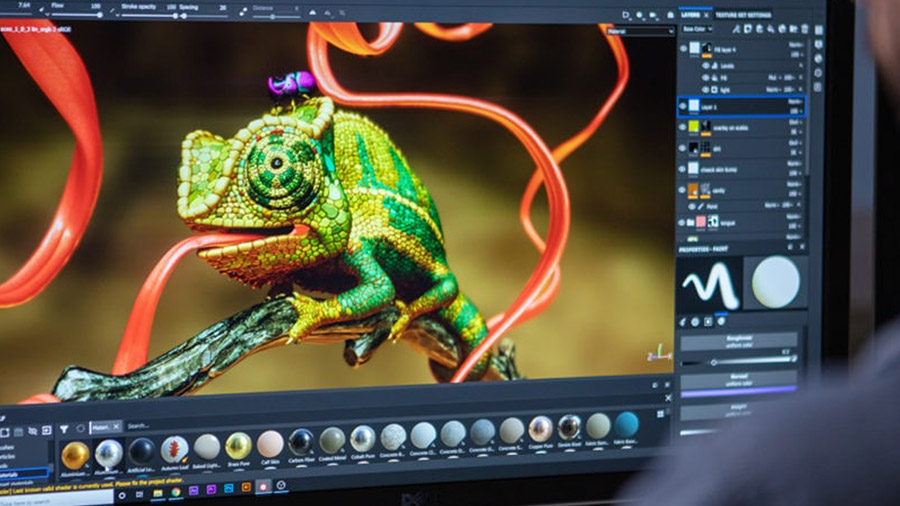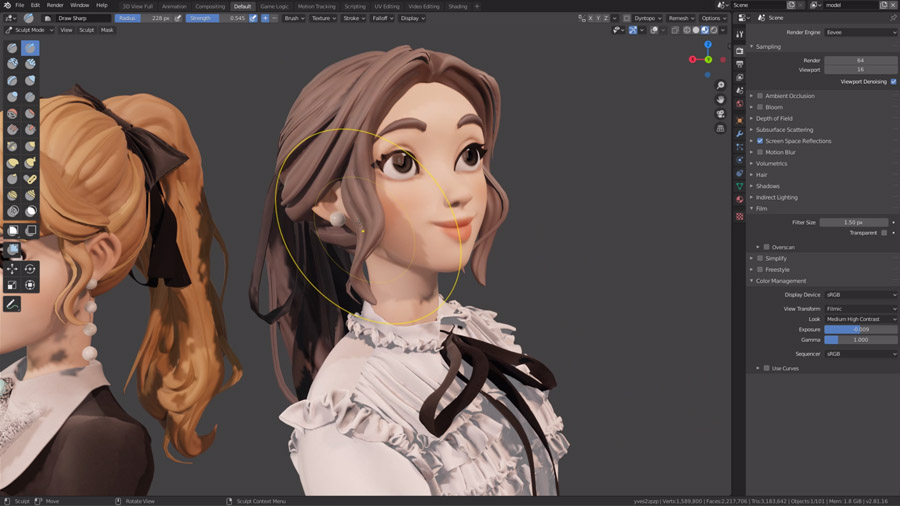3D news 2019 roundup: We look back at the biggest stories of the year
It has been an exciting year in CG.
And so another year draws to a close, and it’s been a busy one in the ever-expanding world of 3D... although a lot of it felt quite familiar. Several smaller outfits were gobbled up by the big guys, while lots of companies jumped on the software-as-service subscription bandwagon. Pixologic released yet more free updates for ZBrush, while big hitters Adobe and Autodesk produced a series of solid updates without really delivering anything revolutionary.
It was also good year for free stuff, whether it’s the continued onslaught of Blender (the best free 3D modelling software, we think), the launch of yet more free online asset sites or Intel’s popular image denoising technology, which is everywhere these days. Here are some of the bigger events that hit the headlines in 2019…
Adobe caught in possession of Substance

The year kicked off with a story that was unexpected, and not met with an entirely warm reception: pioneering French company Allegorithmic was acquired by Adobe. The deal meant that Substance Designer, Substance Painter and Substance Source became part of the Adobe group, alongside Substance Alchemist, which came out of beta a few months ago. As many of the Substance Suite’s users feared, it wasn’t long before Adobe announced it was going subscription-only, starting at $20 a month/$219 per year.
Existing perpetual licenses will be honoured until 2021, but after that users will either have to subscribe or lose maintenance updates.
Epic goes shopping

Late in 2018, Epic Games raised $1.25 billion in another round of funding, and immediately went on a spending spree. Over the course of 2019, it announced seven major acquisitions, starting in January with gameplay programming language firm Agog Labs and 3Lateral, a Serbian company specialising in digital human technology.
This was followed in May by the purchase of real-time visualisation app Twinmotion – which was made available for free – plus Rocket League developer Psyonix. In June it picked up social video app Houseparty, and finally in November, Epic bought Quixel – known for its Quixel Suite and MegaScans – plus Joe Alter’s Shave and a Haircut, which will be offered for free to Unreal Engine users. By our reckoning Epic still has a few dollars left to spend in 2020.
Maxon buys Redshift, Cinema 4D goes rental

At the NAB show in April, Maxon’s new CEO David McGavran announced that Redshift, the popular GPU-accelerated unbiased renderer, was now part of the Maxon family. For the most part, nothing much has changed in terms of support for competing apps (Maya, 3ds Max, Houdini and so on) and pricing.
Daily design news, reviews, how-tos and more, as picked by the editors.
In September, Cinema 4D users hoping for Redshift integration or some tangible benefits of Maxon’s reworking of C4D’s underlying architecture were disappointed, when instead they got R21 – a somewhat meagre update compared last year’s version – and the news that Cinema was joining the subscription-only crew. The news was met with a mixed reaction, and some long-term C4D users have noisily jumped ship to Blender.
New Mac Pro finally announced

Six years after unveiling the cylindrical ‘trashcan’ Mac Pro – and two years after admitting it got the thermally constrained design wrong – Apple finally announced its newest Mac Pro at the 2019 World Wide Developers Conference in June. Borrowing the overall design of the earlier ‘cheesegrater’ model, the Mac Pro supports Intel CPUs up to 28 cores, plus AMD GPUs including a pair of Radeon Pro Vega II Duos, promising 56 teraflops of compute power. Sadly, the base machine starts at $6,000 and still isn’t available for pre-order at the time of writing, so for most buyers it’s looking more and more like a 2020 release.
Blender hits the big time

After three years of work, the free, open-source app Blender hit its milestone release. Version 2.8 brought with it a user-friendly interface, a host of new features, plus updates to its Eevee real-time display and Cycles renderer with support for Cryptomattes. This was followed four months later by 2.81, with yet more updates. 2019 proved to be a big year for the app, with the likes of Nvidia, AMD, Adidas and Ubisoft joining the Blender Development Fund, while Epic Games awarded the Blender Foundation a $1.2 million grant. The future of Blender’s development looks very bright indeed.
Intel versus AMD heats up

After years of dominating the high-end desktop (HEDT) market, this year Intel has had to take a back seat to some pioneering work by AMD. While Intel has struggled to make the transition from 14nm to 10nm wafers, AMD has surged ahead, first with its 7nm Zen 2 Ryzen 3000 chips, and latterly with the phenomenal PCIe 4.0-compatible Threadripper 3000.
Released at the tail end of November, the 24-core TR 3960X and 32-core TR 3970X completely dominate the benchmarks for multithreaded tasks, with the 24-core model often beating Intel’s 28-core Xeon W-3175X. And the bad news for Intel is that AMD has a monster 64-core version waiting to be released in early 2020.
GPU rendering forges ahead

GPU rendering took several strides forward in 2019, not least with the ongoing development of Nvidia’s RTX cards featuring dedicated ray tracing hardware (see our guide to the best graphics cards for more). Traditionally CPU-bound renderers like Arnold and KeyShot gained CUDA-accelerated functionality, while Octane, Modo, V-Ray, Blender Cycles, Clarisse, Substance Painter and Autodesk Flame all added support for RTX-accelerated rendering.
Later this year/early 2020 we can also look forward to Octane and Redshift supporting Apple’s Metal API (which is useful given that Apple won’t support Nvidia GPUs and Nvidia has terminated CUDA support on macOS). AMD is also rumoured to be launching its Navi 23 GPUs next year with support for hardware-accelerated ray tracing. Interesting times ahead…
Read more:

Steve has been interested in CG for many years. He was a regular contributor to 3D World and edited the magazine for two years, and has worked for other magazines including Edge, T3, Official UK PlayStation magazine, Laptop magazine and Windows Visa: The Official Magazine. For Creative Bloq, he mainly contributes tutorials and reviews creative kit.
